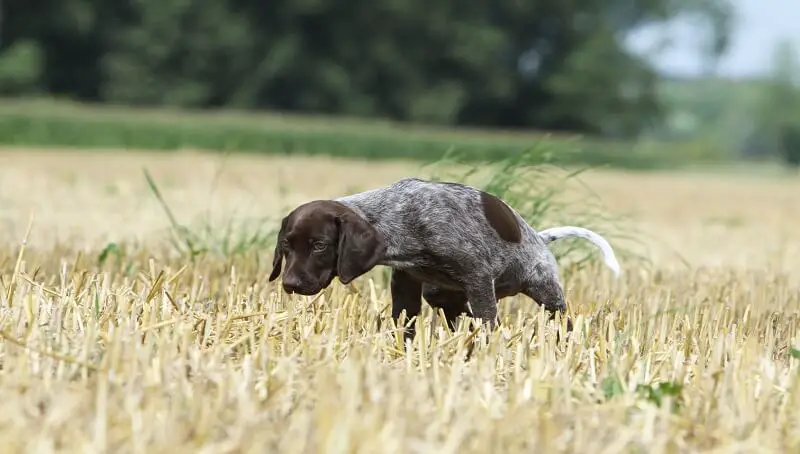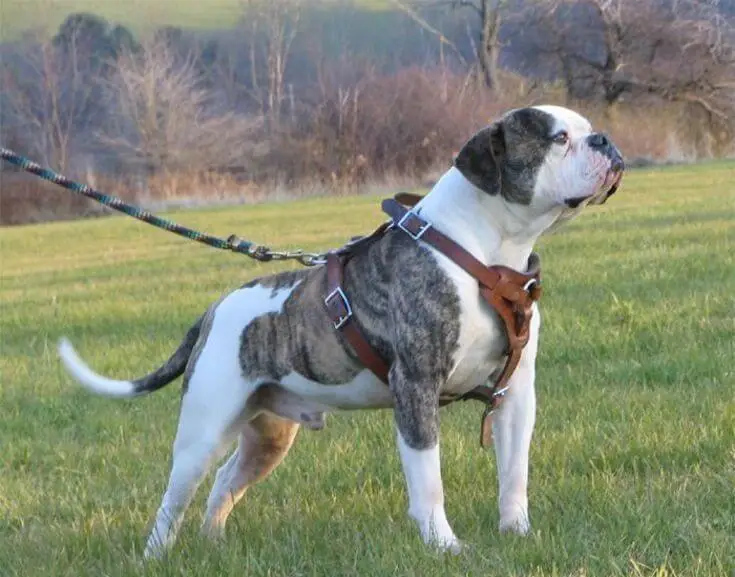Modified stool in dogs is common and can be caused by mild intestinal conditions. Sometimes gastrointestinal problems are directly related to diet, such as when the dog is fed leftovers or when a sudden change in the type of food is made.
Monitoring the consistency and color of your dog’s stool is important because feces can provide important clues about your dog’s health or how it is affected by diet or the environment. As in humans, there are two types of rectal blood exteriorization: hematochezia, fresh blood in stool, and melena, digested blood in the stool.
There are 2 types of bloody poop, so let’s go over them:
- Hematochezia, clean blood in the stool of your dog, is caused by bleeding in the lower digestive tract and colon. The blood in the stool has a bright red color. It is commonly found in:
- Colitis, inflammation of the colon;
- parasites such as ancylostoma;
- trauma and toxins;
- inflammatory bowel disease;
- infections of the anal sac.
- Melena is the digested blood, of black color resembling coffee grounds. Its presence suggests bleeding in the upper digestive tract.
Ingesting blood is the simplest reason why the dog has black, digested blood in the stool. Licking wounds often leads to black-blooded stool for a day or two.
Post-operative complications are another common cause of blood in the stool and are a cause for you to get alarmed. It is important to contact your veterinarian immediately after you notice the dark stool if the dog has recently undergone surgery. It may be a sign of internal bleeding.
Some drug treatments, aspirin, or anti-inflammatory drugs, can cause ulcers in the dog’s stomach or esophagus, conditions that lead to black blood in the stool.
You might also like my articles on how to treat Cushing’s disease, Otitis, and worms in dogs.
Polyps, tumors, and cancer are the most common causes of melena in humans and can have the same effect on dogs. If symptoms persist, consult a veterinarian.
The causes of melena can be:
- Intestinal parasites: Various worms and protozoa, including worms and giardia, can produce bloody diarrhea in the digestive tract. This is because these parasites often feed on and/or irritate the intestinal wall.
- Bacterial and viral infections: Salmonella, E. coli, and parvovirus are just a few of the diseases that can cause bloody diarrhea; however, there are many more.
- Ulcers and tumors: A variety of cancers can affect the digestive system, which can lead to a variety of symptoms, including bloody diarrhea, which is very unpleasant.
- Trauma: If a dog suffers an injury or surgery on the digestive system, it is probable that the dog may suffer bloody diarrhea as a result of the accident or operation.
- Inflammation of the intestine: Any kind of inflammatory disease that affects the intestines can lead to bloody stool.
- Toxins: For many reasons, poisoning or ingesting any food that has been identified as dangerous to a dog can lead to bleeding problems throughout the body or, in particular, bloody stool in dogs.
- Indiscreet food consumption: If a dog eats something he does not usually consume, he may develop intestinal irritation or inflammation, which can lead to melena.
- Liver disease: Severe liver disease, which occurs when the liver is unable to function properly, can also lead to melena.
- Renal failure: Renal failure can lead to melena if the disease is serious enough.
- Addison’s disease: An endocrine condition that affects the adrenal glands and can cause bloody stool in dogs.
- Pancreatic disease: Because the pancreas is a vital organ in digestion, when this organ becomes inflamed or does not function properly, bloody stool can occur.
- Blood clotting problems: Some dogs that suffer from blood clotting abnormalities may have blood in their feces.
- Side effects of medications: It is not uncommon for medications to come with side effects, one of which is melena.
- Ulcers: The stomach and intestinal ulcers can lead to diarrhea and bleeding, among other symptoms.
- Foreign bodies: If a dog chews and eats an object that is not digestible, the object can get stuck or cause damage to the digestive system. This can cause blood in stool, which is not pleasant.
- Stress: Just as it happens in humans, stress can cause fluid and blood to leak from the dog’s intestines as a result of an inflammatory response. Stress colitis is a term used to describe this condition.
If blood in the stool has appeared only once, and the dog has subsequently had normal stools and is no longer bleeding, it is not necessarily an emergency. But if the bleeding is consistent and in large quantities, it is recommended to contact the veterinarian, as this may suggest the presence of a serious condition such as parvovirus, hemorrhagic gastroenteritis, bacterial or viral diseases, or even cancer.
When the dog shows blood in stool for several days in a row, does not appear to be constipated, and has no injuries to the rectal area, you will need to take a stool sample, so the veterinarian can analyze it before making the diagnosis. It is recommended that fecal samples be as fresh as possible. 12 hours after collecting it, the results won’t have the same accuracy.
How to stop melena in dogs
Dogs should not eat for 12 to 24 hours before they are given their next meal. This procedure will allow the digestive system to relax, as dogs can walk without eating for several days in a row.
It is recommended to feed your dog once a day. You can offer it two meals, but this will put more pressure on the irritated stomach than you would like. Give it the second meal 24 hours after the first. After 48 hours, they should be able to return to their normal diet, which should be raw or cooked.
Treatment
 It is not recommended to administer anti-diarrheal medication for human use to the dog, as it can be toxic to his body. In case of persistent melena, it is recommended to visit the veterinarian who will determine the appropriate treatment.
It is not recommended to administer anti-diarrheal medication for human use to the dog, as it can be toxic to his body. In case of persistent melena, it is recommended to visit the veterinarian who will determine the appropriate treatment.
Treatment may include:
- changing the diet, with an intestinal food;
- water therapy, perfusion, to combat dehydration;
- anti-diarrheal medication;
- antiparasitic medication;
- surgical intervention in case of serious pathologies, like foreign bodies, etc.
Regardless of the reason why the dog shows signs of melena, you should always go to your veterinarian and take the relevant exams.
A laboratory test will clarify any doubts and show the treatment to be followed. It is also very important to be careful when feeding the dog and only provide allowed foods that guarantee good health.




